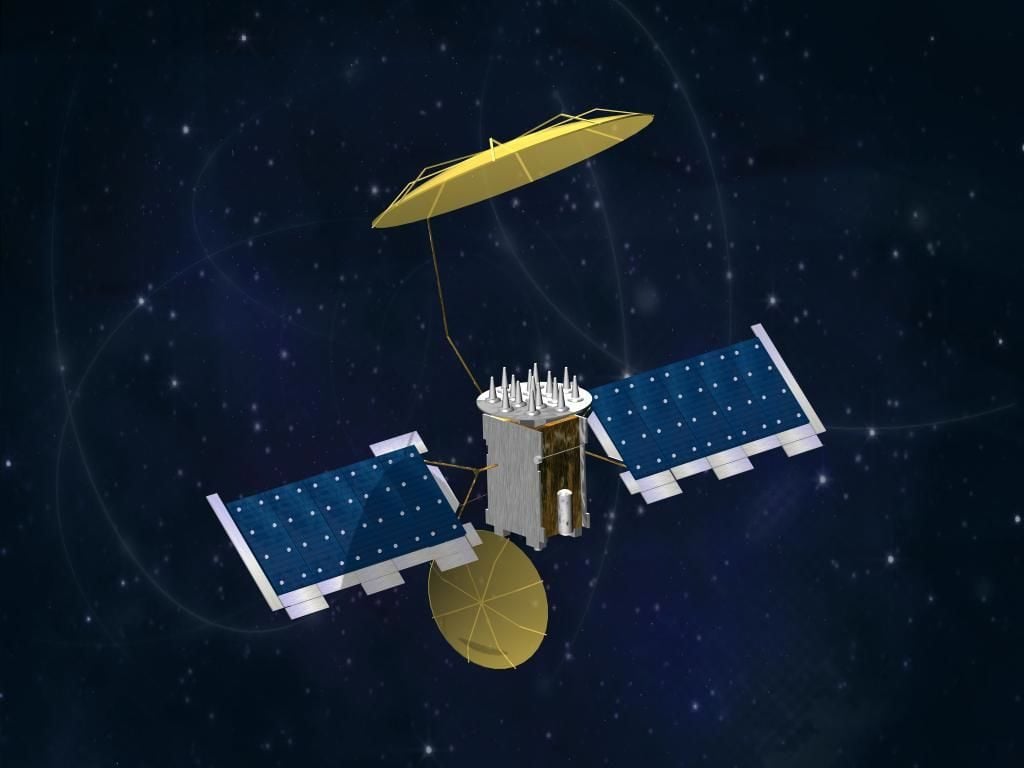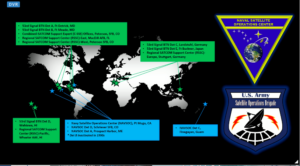
MUOS satellite
AFA: The Army’s Space Operations Brigade and the Navy’s Satellite Operations Center are expected to move under the Space Force as of Oct. 1, Space Force chief Gen. John Raymond said today.
That transfer “might get delayed a little bit if there’s a CR [continuing resolution],” Raymond told the Air Force Association’s Air, Space & Cyber conference.
The Army brigade’s 53rd Signal Battalion operates a payload on the Wideband Global SATCOM (WGS) system. WGS is used by all Combatant Commands and nine partner countries: Australia, Canada, Denmark, Luxembourg, Belgium, Netherlands, New Zealand, the Czech Republic and Norway.
The Army’s Space Operations Brigade is itself a relatively new structure, created in 2019 by former SMDC head Gen. James Dickinson, who now heads up Space Command (SPACECOM). It comprises active duty and reserve soldiers, Department of the Army civilians and Australian military and civil personnel stationed around the globe with Northern Command, European Command, and Indo-Pacific Command areas of responsibility.
 The Army is the largest DoD user of space, and the service has been somewhat reluctant to abandon its space-related activities. These include experimenting with its own payloads, designed to be hosted on other satellites including commercial ones, for communications and intelligence, surveillance and reconnaissance (ISR). The fact that Space Force also is moving to position itself as the key provider of space-based ISR has been causing some friction.
The Army is the largest DoD user of space, and the service has been somewhat reluctant to abandon its space-related activities. These include experimenting with its own payloads, designed to be hosted on other satellites including commercial ones, for communications and intelligence, surveillance and reconnaissance (ISR). The fact that Space Force also is moving to position itself as the key provider of space-based ISR has been causing some friction.
The Navy’s Satellite Operations Center, headquartered at Point Mugu Naval Air Station in California, includes the units that operate and manage the the Mobile User Objective System (MUOS) narrowband communications satellites and their ground stations. Besides at Point Mugu, units are based at Schriever Space Force Base in Colorado; Prospect Harbor, Maine; and at Naval Base Guam Telecommunication Site, Finegayan Small Arms Range in northwest Guam.
The Navy has been the primary user of narrowband communications and in the past has been in charge of acquiring military Ultra-High Frequency (UHF) satellites. MUOS comprises a UHF constellation of five satellites, and is expected to be fully operational in 2020. In May 2019, the Navy decided to relinquish its management of future UHF narrowband communications systems to the Air Force. Thus, it is no surprise that this program would transfer now to the Space Force.






















